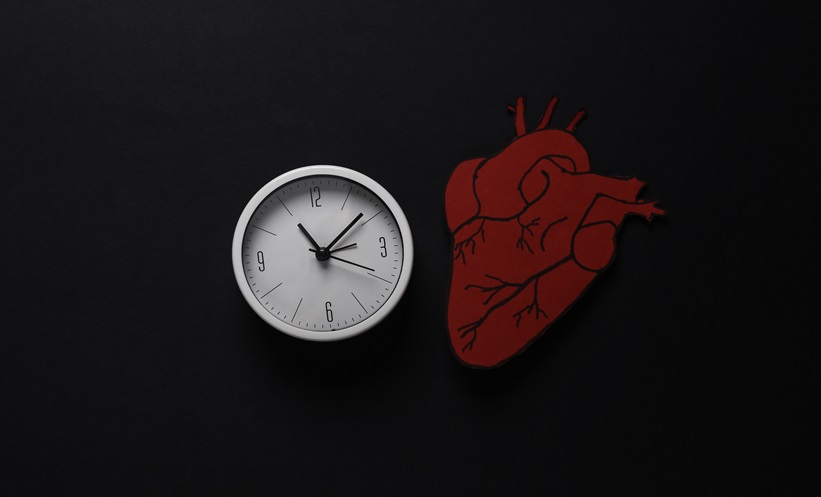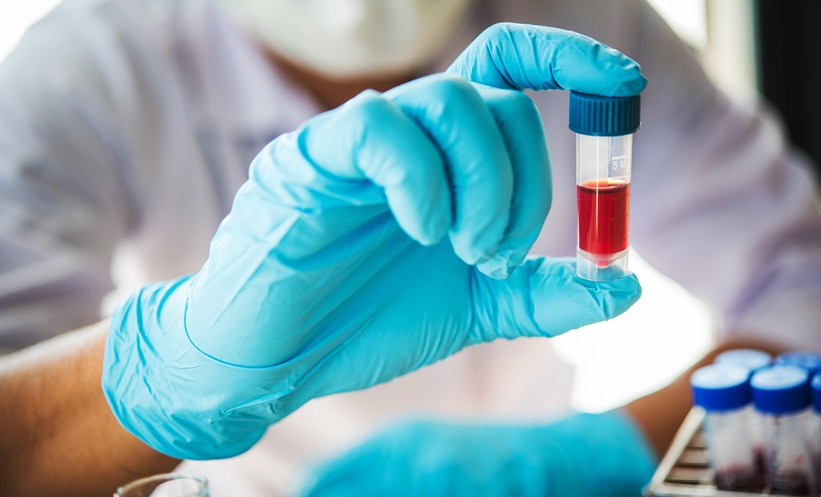Interviewees: Bruno Schwagten,1 Yurii Deminskyi2
1. Cardiologist Electrophysiologist, ZNA Middelheim, Antwerp, Belgium
2. Cath Lab Nurse Practice Educator, Royal Brompton Hospital, London, UK
Disclosure: The interviewees have declared no conflicts of interest.
Acknowledgments: Medical writing assistance was provided by Jennifer Taylor, London, UK.
Disclaimer: The opinions expressed in this article belong solely to the named interviewees.
Support: The publication of this feature interview was supported and reviewed by Merit Medical.
Citation: EMJ Cardiol. 2022;10[Suppl 2]:2-7 DOI/10.33590/emjcardiol/22C6986. https://doi.org/10.33590/emjcardiol/22C6986

Interview Summary
Implantable cardioverter defibrillators (ICDs), pacemakers, and cardiac resynchronisation therapy (CRT) devices are placed in a pocket created under the skin, and compression is required after closing the wound. Electrophysiologists, nurses, and other healthcare professionals typically use gauze and bandages for this purpose, or turn to interrupting antithrombotic medications with potential side-effects. Device pocket haematomas are a common complication of cardiac implantable electronic device (CIED) procedures, and are associated with a significantly increased risk of infection.1,2 In addition, it has been observed that patients who develop a pocket haematoma have a longer length of stay, greater hospitalisation costs, and higher in-hospital mortality rate compared with those who do not develop a haematoma.3
Following feedback from healthcare professionals, Merit Medical designed SafeGuard Focus™ to lower the risk of pocket bleeding4 and subsequent infection.1,5 The device has been shown to deliver almost twice the amount of pressure achieved by handmade compression devices (data on file). Application is quick, with no need to adjust the patient’s position; the pressure is adjustable; and a clear window enables health professionals to assess the surgical site.
In this interview with EMJ, Bruno Schwagten, a cardiologist–electrophysiologist at ZNA Middelheim in Antwerp, Belgium, and Yurii Deminskyi, a practice educator at the Royal Brompton Hospital in London, UK, provided their perspectives on the application of SafeGuard Focus for targeted compression to reduce complications in patients following CIED implantation.
THE PROBLEM OF POCKET HAEMATOMA
Pocket haematoma is one of the most common complications following CIED implantation, with an incidence of 0.6–5.2%3 (reaching up to 15% in some patient subgroups).2 Deminskyi noted: “Pocket haematoma can lead to local discomfort at the incision site and there is an increased risk of infection, which may lead to improper healing.6 In addition, patients with this complication have a lengthier stay in hospital and may require further surgical interventions.”
“A simple haematoma is not a benign complication,” agreed Schwagten. “When a pocket haematoma develops, this clearly increases the chances of later complications. For example, the risk of having a pocket infection increases by about seven-fold.7 Pocket infection is a very serious complication requiring explantation of the device and the leads, resulting in prolonged hospitalisation, and increased risks of thromboembolism and mortality. There is a lot to gain by having effective strategies to avoid haematoma.”
Regarding the timing of haematomas, Schwagten said that most develop in the first 24–72 hours after CIED implantation, making this a critical period for prevention. He said: “That is also the time when we stop antithrombotic medications with the accompanying risk of thromboembolism, and then restart these medications, making it a crucial period especially for high-risk patients.”
Historically, pocket haematomas and bleeding following CIED implantation have been managed using local compression dressings, with a sterile gauze swab or foam pad fixed onto the patient’s incision site using adhesive tape. “With these kinds of dressings, you cannot see the actual pocket as it is covered up by a thick dressing, and this may prevent early detection of an expanding haematoma,” said Deminskyi. “In addition, when the patient starts to mobilise, the dressing may move, especially if the site becomes moist with sweat.”
“If the bleeding continues or restarts when the dressing is removed, the only thing we can do is press on the wound,” added Schwagten. “This is not an effective way to manage this problem.” He pointed out that approximately one-third of patients who receive a CIED are taking concomitant antithrombotic medications, such as clopidogrel, an antiplatelet, or a non-vitamin K antagonist oral anticoagulant (NOAC), also called direct oral anticoagulants, putting them at a higher risk of pocket haematoma than patients not on these drugs.8
Other at-risk groups include elderly patients with loose subcutaneous tissue and poor muscle tone. “This can contribute to pooling of blood around the device as I’ve witnessed from past experience,” said Deminskyi. Finally, those with renal impairment are also prone to developing a post-procedural bleed, mainly due to platelet dysfunction caused by uraemia.7,9
SAFEGUARD FOCUS™ FOR PREVENTION OF POCKET HAEMATOMA
SafeGuard Focus is used extensively at the Royal Brompton Hospital following new or box change implants. “My experience of using SafeGuard Focus has been a very positive one,” said Deminskyi. “It is very easy to use and has saved a lot of time in the cath labs. Previously, we had to transfer patients from the X-ray table onto a bed and sit them up in order to place the compression dressings. In contrast, the scrub nurse can fix SafeGuard Focus onto the patient immediately after the pacemaker pocket has been sutured and a dressing has been applied to the wound site.”
“One of the most important features of the device is that it applies pressure in a more targeted way compared to when we apply pressure with the hands or with an external bandage,” noted Schwagten. “You don’t know where the pressure is going if you apply a bandage with straps to the patient. In addition, with SafeGuard Focus, you know that the pressure will remain constant during the time that the device is inflated.”
“The device has very good adhesive properties, which from personal experience provides better and stronger pressure compared to traditional local compression dressings, which don’t have that same stickiness property,” added Deminskyi. “This is especially beneficial if the patient starts to sweat or has a vasovagal syncope, causing a standard dressing to unravel and fall off. So, this is an important factor when trying to reduce the risk of haematoma formation.”
He also highlighted that the device has a clear window to facilitate surgical site assessment. “This is important to evaluate if the device is giving enough compression or is effective in combating early formation of haematomas,” said Deminskyi. “For me, this device is great because it allows healthcare professionals to not only detect early, but also treat and manage haematomas appropriately post-procedure.”
Regarding the cost-effectiveness of SafeGuard Focus, Deminskyi noted that while the device itself is more expensive than traditional compression dressings, “the cost of a single SafeGuard Focus device is nothing compared to the cost of a patient having to, for example, stay longer in hospital with a haematoma, which if left untreated or not properly managed may well see them having to go through another procedure to treat this complication.”
Schwagten added: “If it can prevent one infection in every 50 patients, then it is likely to be cost-effective, because an infection is a costly thing not only in terms of patient burden but also health budgets. Infections lead to increased time in hospital, and require staff time and antibiotics, making them a drain on resources.”7
As for the ability of SafeGuard Focus to prevent infections, bleeding, and complications, Deminskyi said: “I strongly believe that having some form of dressing over the pacemaker wound site helps to prevent infections, which is what we practice at the Royal Brompton. SafeGuard Focus is great for this as it provides a perfect seal around the wound borders with its adhesive properties. Personally, I think any patient on an antiplatelet or anticoagulant drug should be given this device as a prophylactic measure post-procedure for a few hours at least until being discharged home.”
Deminskyi advocates taking preventive measures rather than employing a ‘wait-and-see’ approach. He said: “I believe it is important to take the highest precautionary measures to eliminate any possible complications, which could occur post-procedure, particularly as the SafeGuard Focus is easy to use. Because if a patient has a complication and you haven’t taken the necessary precautions, then that will mean a longer hospital stay. Dealing with that is more time consuming as opposed to applying the SafeGuard Focus at the beginning.”
With respect to patients having a known bleed, Deminskyi pointed out that this should be resolved prior to the application of a SafeGuard Focus. “It’s more about managing those patients that are at the highest risk of having a bleed,” he said. “So, for example the elderly who are on anticoagulants and have poor muscle tone. They are the ones that are the most vulnerable so you’d rather take the right precautions from the beginning as opposed to just waiting and seeing what happens. Because after all, up to 5% of patients as we know from research do develop post-procedural haematomas7 and of those, probably most of them are elderly with underlying factors.”
CLINICAL USE OF SAFEGUARD FOCUS™
The Royal Brompton Hospital regularly uses SafeGuard Focus and has established protocols in place. Regarding inflation volume, the general rule is to start with 60 mL. If the patient has a slight ooze, including from the skin, the device is inflated up to 120 mL maximum for approximately 3 hours.
The pressure can be adjusted over time, and for patients with an ooze the protocol recommends increasing the pressure volume by 5 mL at regular intervals until the oozing has stopped. Deminskyi explained: “If the inflation is 60 mL and the patient is having a small skin bleed or a bleed from a pocket, nothing major but it just needs a bit of extra compression, I apply 5 mL extra, wait a minute or two, and if that does the job and the oozing has stopped, that’s fine. If not, then I increase it by 5 mL all the way up to 120 mL if necessary.”
The ability to fine-tune the pressure in small increments is an important feature of SafeGuard Focus. “At the end of the day, we don’t want to compromise the skin tissue perfusion around that site by applying too much pressure on,” said Deminskyi.
Regarding when to remove the device, if starting from 60 mL, then typically after 1 hour it is recommended to start to deflate the device, 20 mL per hour, until the device is fully deflated after 3 hours. “If the patient is on anticoagulants, we may extend the deflation time by an hour or two,” said Deminskyi.
Until now, the Brompton has used the adhesive SafeGuard Focus but will shortly also start using the non-adhesive option for patients with abrasions, cuts, or an allergy to the adhesive dressing.
Certain patient populations should routinely receive SafeGuard Focus following CIED implantation, said Deminskyi. This includes those receiving a CRT defibrillator or ICD. He explained: “My logic is that because these are bulky devices, the cardiologist has to create a bigger pocket compared to that needed for a pacemaker, so there is potentially a slight increased risk of bleeding around the site. Implantation of subcutaneous ICDs also requires a large incision, and SafeGuard Focus should be applied in these patients.”
Pacemakers are relatively small devices and here the use of SafeGuard Focus depends on the patient’s characteristics and comorbidities. For example, a patient with a previous percutaneous coronary intervention who is taking triple antithrombotic therapy, including the antiplatelets aspirin and clopidogrel and an anticoagulant such as a NOAC. “In this situation, even if the device is small, you know the patient’s chances of bleeding are very high,” said Deminskyi. “So instead of just waiting and seeing, the patient should receive SafeGuard Focus as a preventive measure.”
He stressed that SafeGuard Focus should be used in all patients on anticoagulants because they are at the highest risk. “If you’re going to be picky about using this device in these high-risk patients, who are you actually saving this device for? Even if the procedure has gone well and there’s no bleeding, if the patient is on anticoagulants many operators still want a prophylactic dressing. So, to summarise, SafeGuard Focus is not just for patients with a small weep or skin bleed, it should also be used prophylactically in all patients taking anticoagulants.”
Wounds heal more slowly in patients with obesity; diabetes; or conditions that compromise the immune system, such as HIV infection. Deminskyi said: “These patients should also receive SafeGuard Focus, even if they are not taking antithrombotic therapy, because the compression will aid the initial wound healing.”
He pointed out that SafeGuard Focus is also useful for patients having lead extractions. “From my experience, there is a lot of bleeding during these procedures since the laser has to cut through tissues to retrieve the broken or infected lead. These patients should receive SafeGuard Focus after the procedure even if they do not have any underlying medical comorbidities.”
Schwagten is currently enrolling patients in a trial to evaluate whether SafeGuard Focus is superior to manual compression for preventing severe complications, such as large haematomas, bleeding, and infections. Other objectives are to compare the ability to prevent small haematomas and reduce pain. “Pain management is really important to patients so it’s crucial to compare data from both management strategies,” he said. Haematoma will be graded from 1 to 3 and the pain severity index will also be recorded.
The study is set to enrol 200 patients, of which 50 will receive the self-adhesive SafeGuard Focus, 50 will receive the non-adhesive SafeGuard Focus, and 100 controls will be allocated to standard of care compression dressings. Initially, patients will be selected for the trial who have a high risk of haematoma or bleeding. Patients must be over 18 years and have received a CIED (pacemaker, ICD, or CRT), plus at least one of the following: coagulopathy, dual antiplatelet therapy with aspirin and clopidogrel, vitamin K antagonist or NOAC, high HAS-BLED score, renal insufficiency, congestive heart failure, above 70 years of age, frail, receiving corticosteroids (these patients have very fragile skin and a higher bleeding risk), or require an emergency CIED and are unable to stop anticoagulation. Patients will be followed up for 24 hours and then discharged, with further follow-up at 1 week, 30 days, and 1 year post-treatment.
Ultimately, Schwagten wants the trial to result in a flowchart for using SafeGuard Focus that can be used in appropriate patients worldwide. Currently, the trial protocol is to inflate the device to 60 mL, then check the pain level and whether there is any bleeding. Reassessment will be performed after 2 hours, with inflation reduced to 50 mL if there is no bleeding. In cases of bleeding, inflation would be increased as recommended. Another reassessment should occur 1 hour later and the inflation reduced, followed by a final reassessment after another hour, with removal after a total application of 4 hours if there is no bleeding. Schwagten explained: “I think we should avoid inflating too much because we don’t want to cause ischaemia. Then gradually decrease the pressure over time. Ideally, I think four hours of application will be sufficient.”
Should SafeGuard Focus be routinely applied in all patients undergoing CIED implantation? Deminskyi responded: “I think routine use in all patients is not necessary as the chances of having a post-procedural haematoma is below 5%, and probably less if the patient is not a diabetic, immunocompromised or on any blood thinning agents. If those criteria are matched and a procedure has gone well, then in my opinion patients do not require SafeGuard Focus. But in patients with one of these underlying medical needs then we have to treat them appropriately regardless of how well the procedure has gone. Because the cost of even one night longer in hospital is 20 to 30 times more than the cost of one SafeGuard Focus so the decision is clear-cut.”
For Schwagten, the jury is out on routine use of SafeGuard Focus in all patients until the trial results are in. He said: “SafeGuard Focus is easy to use and if the trial shows that it reduces pain compared to standard compression dressings, there is the potential to use it following all CIED implantations.”

![EMJ Cardiology 10 [Supplement 2] 2022 Feature Image](https://www.emjreviews.com/wp-content/uploads/2022/07/EMJ-Cardiology-10-Supplement-2-2022-Feature-Image-1-940x563.jpg)




